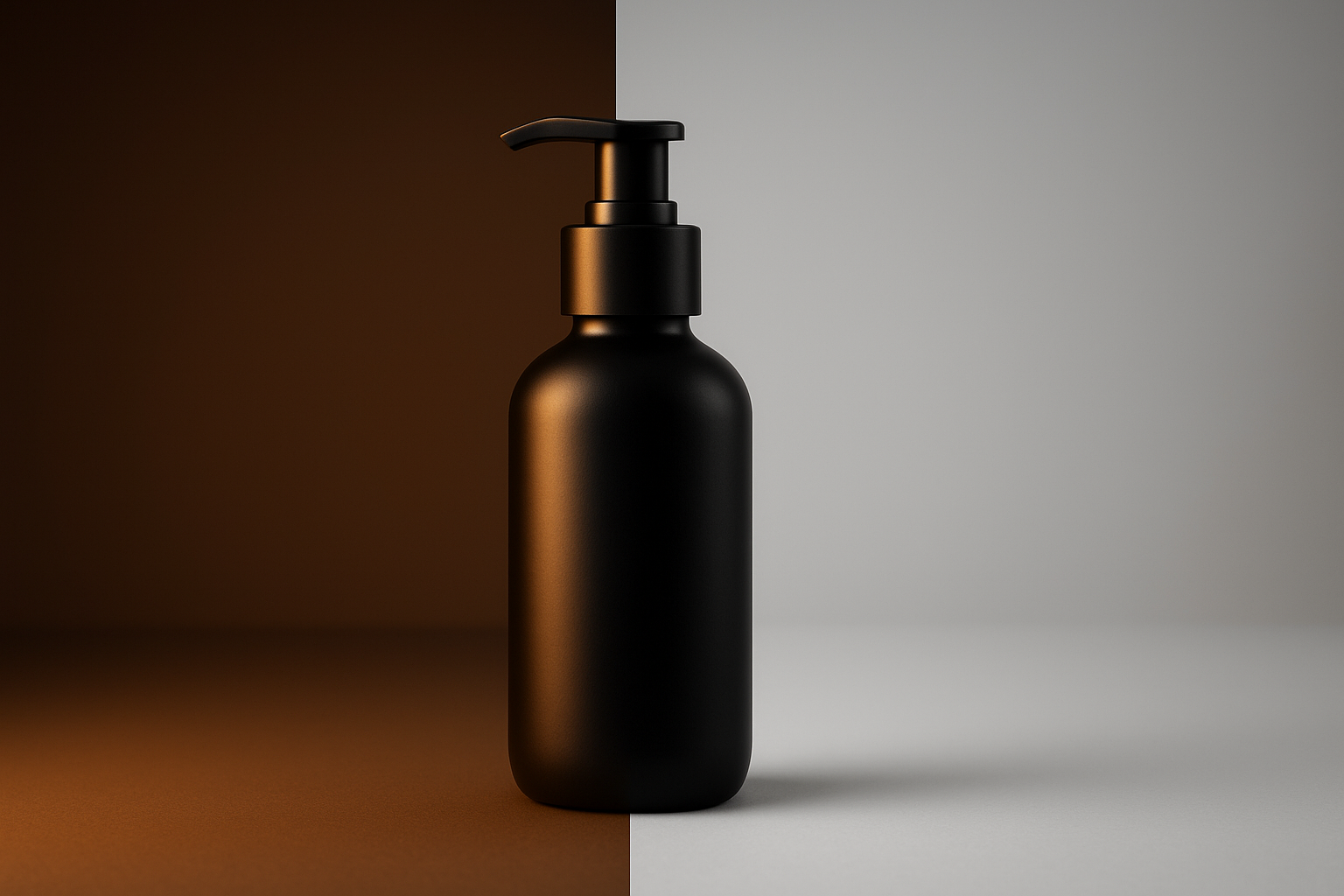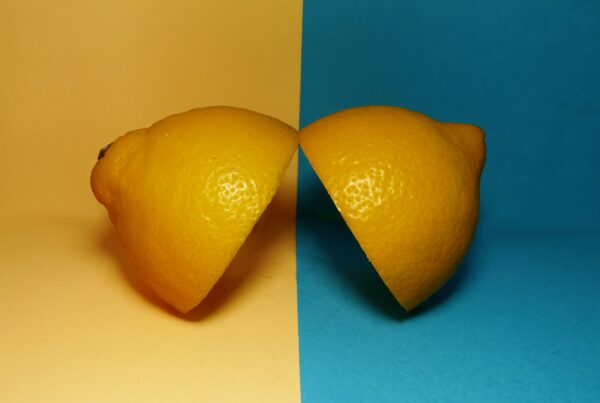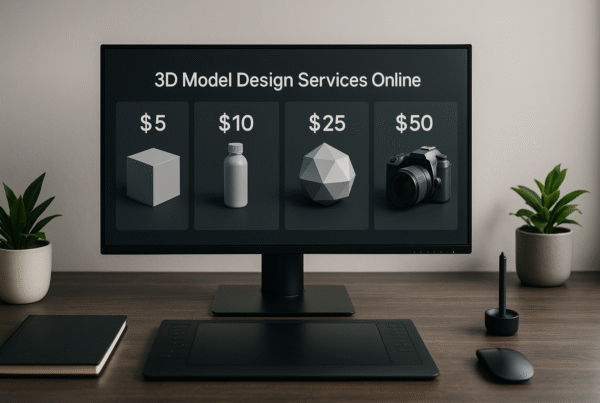When it comes to 3D Animation vs product photography, businesses face a crucial decision that impacts both their budget and marketing effectiveness. In recent years, e-commerce competition has significantly increased, making high-quality product visuals more important than ever. People are visual creatures, and the images you choose directly evoke emotions that drive purchasing decisions.
3D product visualization has emerged as a powerful alternative to traditional photography, offering remarkable flexibility and cost efficiency. With 3D rendered product images, you only pay for the working hours 3D artists spend on your projects. In contrast, many 3D product visualization studios even include free corrections in their pricing. Unlike photo shoots that require physical products and setups, 3D virtual product photography allows for color and shape adjustments with just a few clicks.
Whether you’re showcasing a single item or an entire catalog, understanding the cost, time, and creative differences between these approaches is essential. This guide will help you determine which visual medium delivers the best return on investment for your specific products and marketing goals.
Understanding the Basics: 3D Animation vs Product Photography
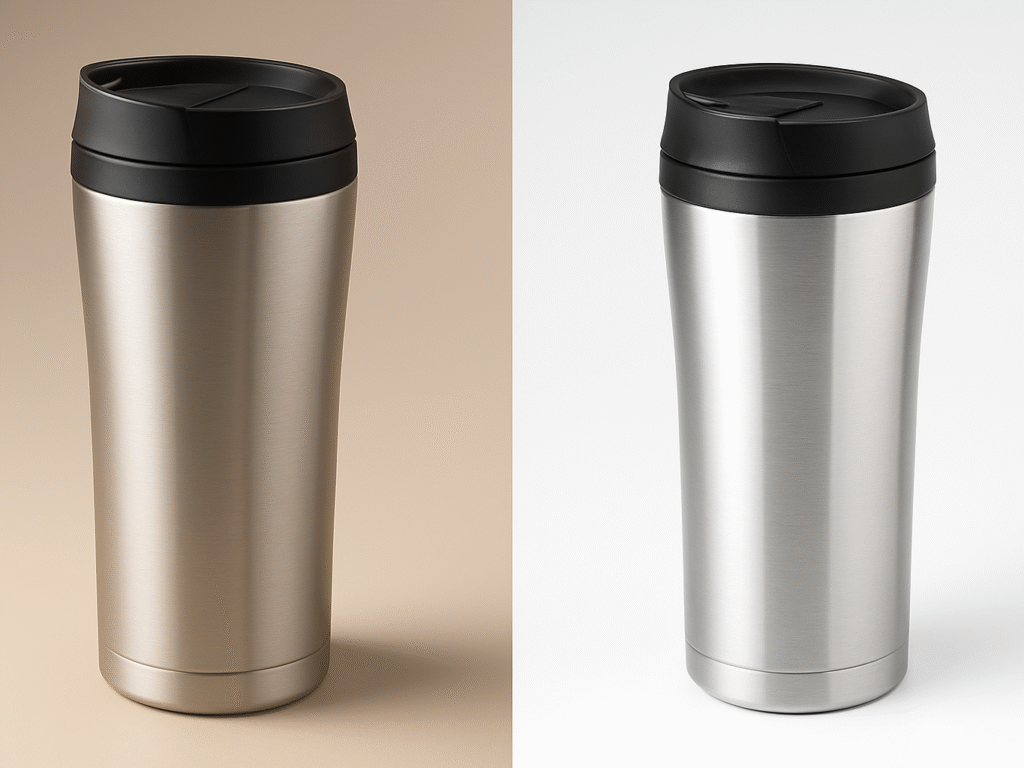
Before diving into cost comparisons, it’s essential to grasp the fundamental differences between 3D Animation and product photography and how these approaches impact your marketing strategy. These two approaches to product visualization operate on entirely different principles and production methods.
3D Product Animation Services: Your Step-By-Step Buyer’s Guide [2025]: Ready to transform your product visuals? Our comprehensive buyer’s guide reveals how to choose the right 3D animation services, compare pricing models, and avoid common pitfalls that cost businesses thousands.
1. What is 3D product animation, and how does it work
3D product animation uses computer-generated imagery (CGI) to create photorealistic representations of products without requiring physical samples. This digital approach transforms technical drawings or concept designs into virtual models that can be manipulated, textured, and animated. The process involves several distinct stages:
- Concept Development: Gathering product specifications and requirements
- 3D Modeling: Creating the digital twin of the product using specialized software
- Texturing and Lighting: Adding realistic materials and lighting effects
- Animation: Adding movement to showcase features and functionality
- Rendering and Post-Production: Exporting to the final video with additional elements
Unlike traditional photography, 3D Animation allows you to showcase products that don’t physically exist yet or demonstrate internal mechanisms that would otherwise remain hidden. For businesses looking to leverage this technology, understanding 3D product animation for e-commerce becomes crucial for maximizing conversion rates. Furthermore, once a 3D model is created, it becomes an invaluable asset that can be repurposed for multiple marketing channels, including virtual reality experiences, interactive product configurators, and exploded view demonstrations.
2. How traditional product photography is done
Traditional product photography captures physical products using cameras and lighting equipment in a controlled environment. The process typically requires:
A professional photographer manipulates exposure, aperture, and focus settings to create optimal images. The setup often involves a studio with backdrops, reflectors, and carefully positioned lighting equipment to highlight product features. For complex shoots, especially those featuring lifestyle contexts, photographers must coordinate props, models, and sometimes location permits.
After capturing the images, post-processing in software like Photoshop is necessary for color correction, background removal, and retouching. This traditional approach has been refined over decades and excels at capturing authentic textures and materials in real-world settings.
3. Key differences in production workflows
The most striking difference between these approaches lies in their production efficiency. Product photography requires physically manufacturing and transporting samples, coordinating photoshoots, and potentially redoing entire sessions if product specifications change. Conversely, 3D Animation bypasses the whole logistical process, with no need to produce physical samples, transport them to studios, or rebuild arrangements for each shot.
In terms of creative control, 3D rendering offers unprecedented flexibility. Every aspect of the image, from lighting angles to surface materials, can be perfectly controlled, ensuring consistent brand representation across all products. This level of control is particularly valuable for technical products where specific features need highlighting.
For businesses with large product catalogs or frequent variations, 3D visualization provides remarkable scalability advantages. Creating 100, 1,000, or even 10,000 images with consistent composition, perspective, color, and lighting becomes feasible because the same settings can be applied across all renders. Additionally, 3D models remain editable indefinitely, allowing for updates years after initial creation, something impossible with traditional photography.
Moreover, 3D rendering offers exceptional adaptability for businesses targeting international markets. The same 3D model can generate images tailored to different cultural preferences or regional campaigns while maintaining perfect product consistency, an advantage particularly valuable for seasonal promotions and special marketing initiatives.
Cost Breakdown: Product Animation Cost vs Photography
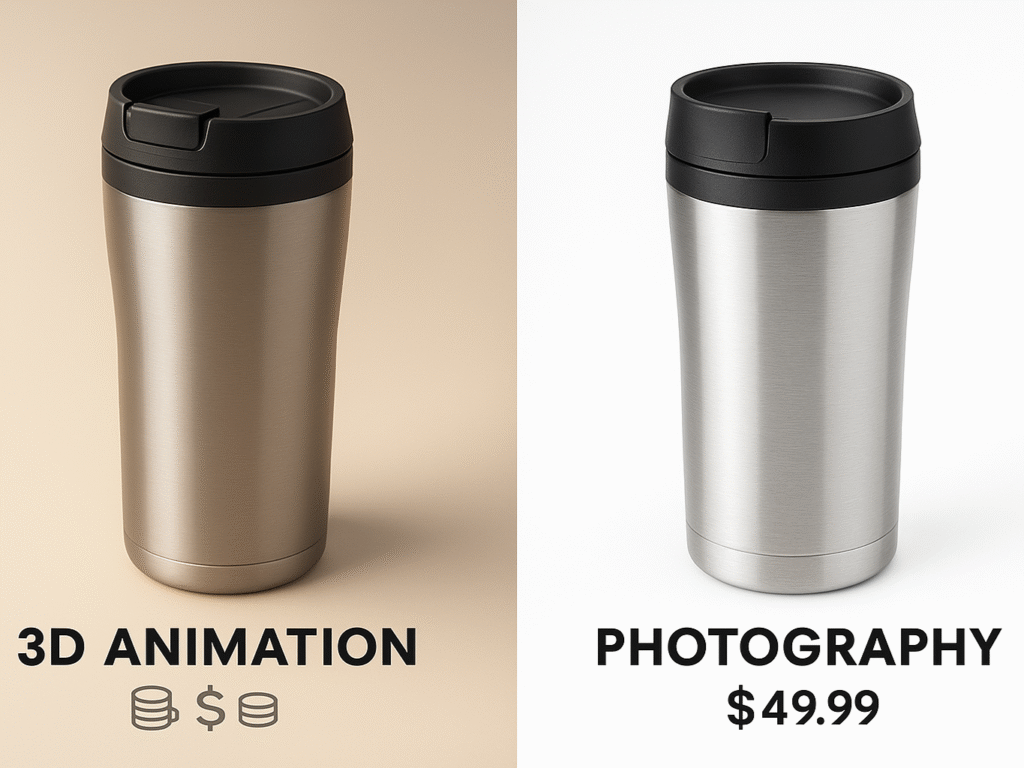
When evaluating 3D Animation vs product photography, the financial equation of product visuals goes far beyond the initial price tag. Let’s analyze the product animation cost vs photography to understand the dollars and cents that separate these approaches.
1. Initial setup costs: software vs studio
The starting investment for both methods varies dramatically. Traditional photography requires significant physical infrastructure, professional cameras, lighting equipment, and studio space that can cost thousands upfront. These expenses often include:
- High-end cameras and lenses ($2,000-$10,000)
- Lighting equipment and backdrops
- Studio rental or purchase ($2,000-$20,000 per month)
In contrast, 3D Animation demands powerful computing hardware and specialized software. Initial investment includes workstations ($2,000-$10,000 each) and software licenses ($1,000-$3,000 per seat annually). Choosing the right 3D product animation software significantly impacts both initial costs and long-term productivity. Despite seemingly comparable startup costs, 3D rendering typically requires fewer physical resources and space.
2. Ongoing production costs per product
According to recent research on product animation cost vs photography, 3D visualization is approximately six times more cost-effective than traditional photography. For businesses considering professional assistance, exploring 3D product animation services can provide cost-effective alternatives to in-house production. For a five-product furniture shoot, photography costs average $11,076, whereas 3D modeling accomplishes the same results for approximately $2,000.
Photography expenses multiply with each new product or variation, as they require:
- Photographer and studio fees (about 40% of total costs)
- Equipment, props, and set construction
- Transportation and logistics (around 60% of total costs)
Consequently, 3D rendering becomes increasingly cost-effective at scale. Once a 3D model exists, generating new images with different colors, materials, or backgrounds takes minutes rather than days. For businesses with large catalogs or frequent updates, the product animation cost vs photography comparison shows that this efficiency translates to substantial savings over time.
3. Hidden costs: logistics, reshoots, and revisions
Beyond obvious expenses lie numerous hidden costs that significantly impact the total investment. With traditional photography, these often include:
- Physical sample production and shipping
- Travel expenses for marketing teams and product managers
- Set construction and deconstruction
- Storage of physical products
- Reshoot expenses for product updates
Notably, 3D visualization eliminates many of these concerns. Most 3D studios include correction rounds in their pricing. CGIFurniture, for instance, offers three rounds of corrections free of charge (up to 60% of the project scope). Additionally, 3D enables visualization of products that don’t physically exist yet, allowing marketing to begin before production samples are available.
In essence, 3D visualization offers predictable, fixed pricing independent of geography. This predictability makes budgeting more straightforward compared to traditional photography’s variable costs affected by location, transportation, and personnel requirements.
E-commerce 3D Product Animations: How Top Brands Get 250% More Conversions: Discover proven strategies that leading e-commerce brands use to boost conversions with 3D product animations. Get actionable insights and real case studies showing how visual upgrades drive sales.
Time Efficiency and Scalability
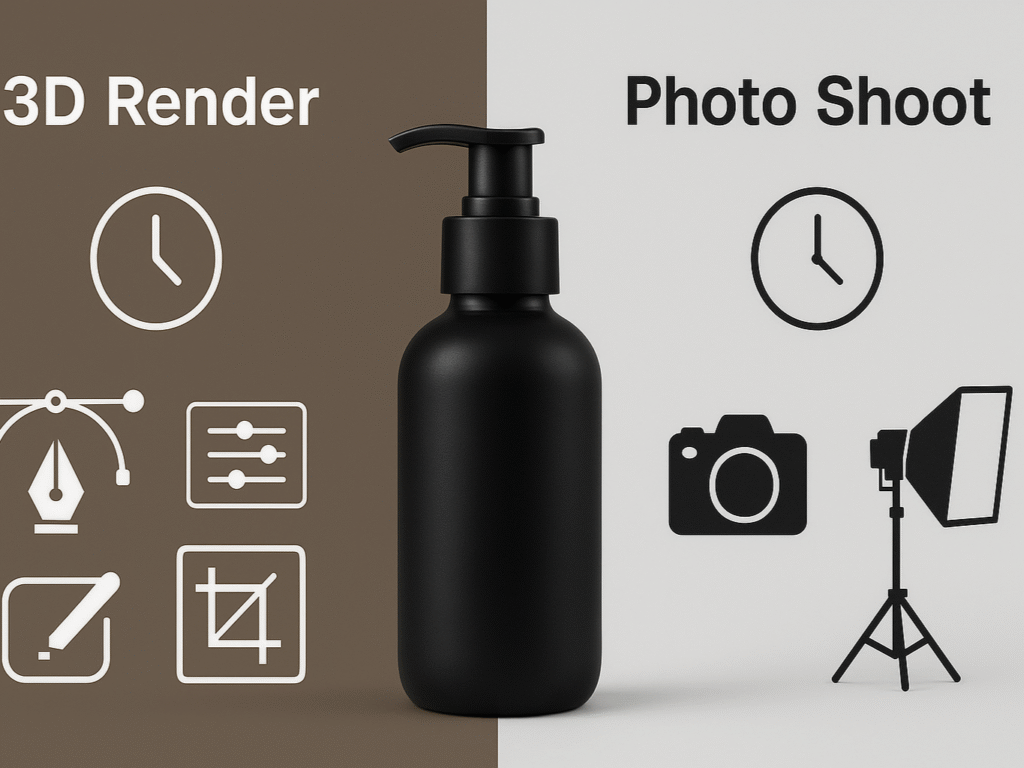
Speed to market often determines the success of product launches in competitive industries. As you consider 3D Animation vs product photography, understanding their timeline differences becomes crucial for meeting tight deadlines and scaling your visual content.
1. Turnaround time: 3D render vs photo shoot
When comparing 3D render vs photo shoot timelines, traditional photography inevitably creates production bottlenecks, primarily due to its complex logistics. Each photoshoot requires coordinating photographers, models, stylists, studio rentals, and physical product transportation. Even simple product shoots demand extensive setup, lighting adjustments, and post-production editing that can stretch timelines.
Alternatively, 3D rendering streamlines the entire production process. Once the initial 3D model is created, generating images from multiple angles becomes remarkably efficient. Although the initial modeling phase requires time investment, specifically for highly detailed products, the subsequent rendering process accelerates dramatically.
Most importantly, the 3D render vs photo shoot comparison shows that 3D visualization enables marketing to begin before manufacturing, allowing you to showcase products that don’t physically exist yet. This head start can significantly reduce time-to-market and create early customer engagement.
2. Batch production: scaling visuals for large catalogs
For businesses with extensive product catalogs, 3D rendering offers unmatched efficiency advantages:
- Consistent quality: Creating 100, 1,000, or even 10,000 images with identical composition, perspective, and lighting becomes straightforward
- Simplified logistics: No need to transport physical samples or rebuild sets for each product
- Streamlined workflows: Digital processes eliminate coordination headaches across multiple photoshoots
A single well-established 3D environment can serve as a template for entire product lines, allowing for batch processing that would be logistically impossible with traditional photography. This approach proves invaluable for furniture manufacturers, packaging designers, and companies with multiple product variations.
3. Speed of updates and product variations
The most striking advantage of 3D visualization is its unparalleled flexibility for updates. In traditional photography, even minor product changes require entirely new photoshoots: an expensive and time-consuming proposition.
In 3D rendering, modifications happen digitally and instantaneously. Color changes, material adjustments, or even structural alterations can be implemented within minutes rather than days. This rapid adaptation capability proves invaluable when:
- Marketing needs seasonal variations
- Product designs evolve during development
- Multiple color options must be displayed
- International markets require customized visuals
This adaptability extends throughout the product lifecycle. Remarkably, 3D models remain editable indefinitely, allowing you to update visuals months or even years later without rebuilding physical sets or locating identical props. For products with long life cycles or frequent iterations, this ongoing flexibility delivers substantial time savings and marketing agility.
Flexibility and Creative Control
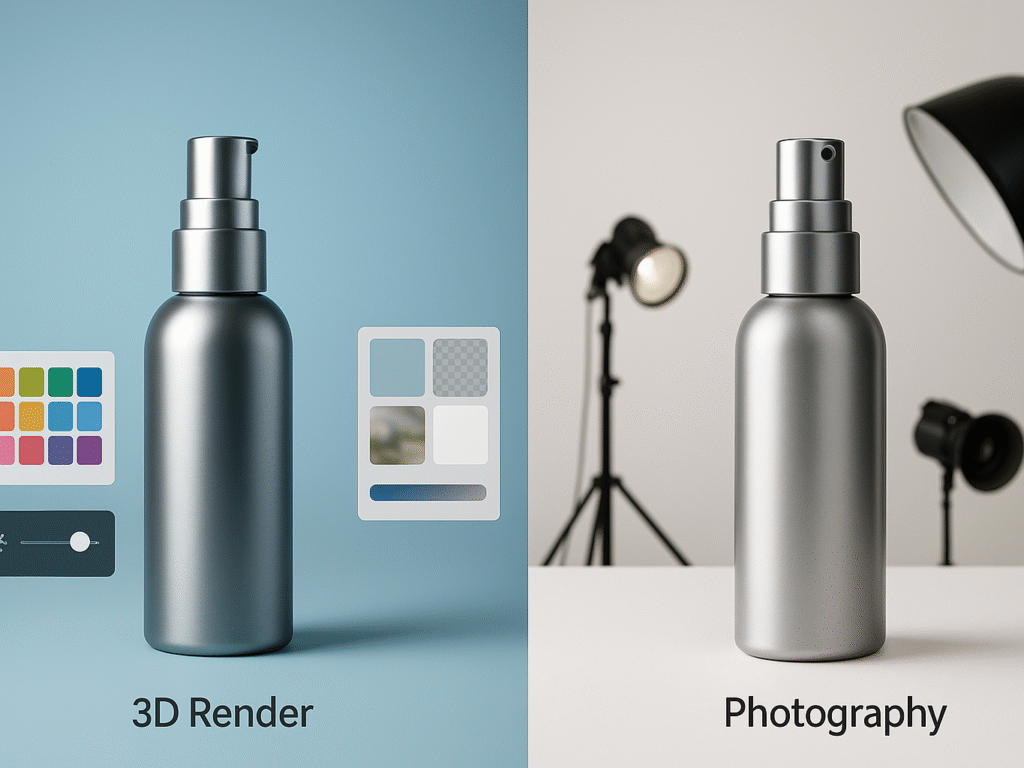
Creative freedom represents a decisive factor when choosing between 3D product animation and traditional photography. Indeed, the ability to manipulate visuals after initial creation fundamentally changes how businesses approach product marketing.
1. Editing capabilities: real-time changes vs reshoots
With 3D product visualization, changes can be implemented directly in the software, allowing for swift adjustments to every aspect of the image. Whether you need to modify the product’s color, add features, or change the background, these alterations happen with minimal effort. Traditional photography, however, makes even small changes problematic, often requiring entirely new photoshoots that are both expensive and time-consuming.
For product development teams, 3D rendering enables rapid prototyping and testing of variations without physical samples. This capability significantly shortens development cycles, giving your brand a competitive edge. Making revisions to a 3D model is far simpler and more cost-effective than coordinating reshoots, which typically demand rebuilding entire sets and securing the same lighting conditions.
2. Scene customization: virtual environments vs physical sets
Traditional photography remains bound by physical limitations, equipment constraints, environmental factors, and studio availability. In contrast, 3D rendering provides complete authority over every visual element:
- Lighting can be perfectly controlled for consistent shadows and highlights
- Backgrounds can range from simple white backdrops to elaborate environments
- Product placement and camera angles can be adjusted infinitely
- Seasonal or themed variations can be created forthwith
This control proves invaluable for technical products where specific features need highlighting or for creating images that would be virtually impossible through conventional photography. Virtual environments eliminate the logistical challenges of location shoots, substantially reducing costs associated with travel and setup.
3. 3D rendered product images for multiple use cases
Once a 3D model exists, it becomes an invaluable asset that can be repurposed across numerous marketing channels. A single well-crafted model serves as the foundation for:
- E-commerce product pages showing multiple angles and variations
- Interactive product configurators allow customer customization
- Exploded view animations demonstrating internal components
- Augmented reality experiences place products in customers’ spaces
This versatility extends throughout the product lifecycle. The 3D model remains editable indefinitely, allowing you to generate updated visuals years later without rebuilding physical sets or locating identical props. Ultimately, 3D rendering delivers unmatched creative freedom and operational efficiency that traditional photography cannot match.
Professional 3D Animation Software: Studio Tools vs. AI Solutions (2025 Guide): Confused about which 3D animation software to choose? Our detailed comparison breaks down studio-grade tools versus AI-powered solutions, helping you make the right investment for your business needs.
When to Use 3D Product Animation vs Photography
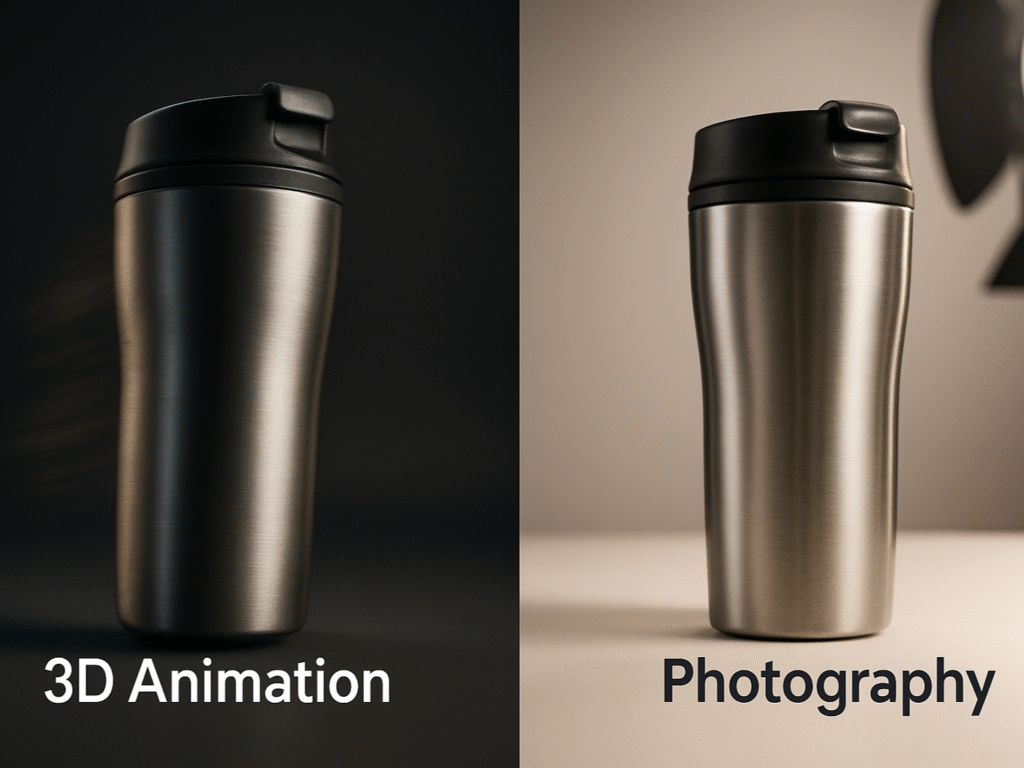
Deciding between 3D Animation vs product photography hinges on your specific marketing objectives and product characteristics. First of all, understanding the ideal applications for each approach helps maximize your visual content investment.
1. Best use cases for 3D product photography
3D product photography excels in several key scenarios that traditional photography cannot match. This approach is particularly valuable for products with multiple variations, whether in color, style, material, or texture. The technology enables unlimited customization without photographing each variant separately.
Knowing when to use 3D product animation becomes clear – it’s essential when presenting products before they physically exist. This capability allows brands to:
- Test market demand for different designs or colors before manufacturing
- Accelerate new product launches without waiting for physical samples
- Present prototypes to potential investors in a realistic, tangible way
Above all, 3D product visualization proves indispensable for businesses with extensive product catalogs. Once the initial 3D model exists, generating new angles and variations becomes remarkably efficient, a crucial advantage for furniture retailers, consumer electronics manufacturers, and industrial equipment suppliers.
2. When Animation is better than photos for e-commerce
Understanding why Animation is better than photos for e-commerce becomes clear when examining specific contexts where Animation dramatically outperforms static images. According to a Shopify study, adding 3D visualization to an e-commerce site can boost sales by up to 94%.
This substantial increase stems from Animation’s ability to demonstrate product functionality and features that photos cannot capture. Modern advancements in AI 3D product animation are making this technology even more accessible and cost-effective for businesses of all sizes.
Animation proves particularly effective for:
- Products with moving parts or complex internal mechanisms
- Items requiring assembly or installation instructions
- Technical products where specific features need highlighting
In addition, this demonstrates why Animation is better than photos for e-commerce – 3D product animation creates immersive experiences through interactive elements like configurators, which allow customers to customize products in real-time, significantly enhancing engagement and reducing return rates.
3. Choosing based on product complexity and variation
Product complexity should guide your decision between traditional photography and 3D visualization. As can be seen from industry practices, traditional photography remains preferable in certain situations:
- Products with complex transparent or reflective materials, like fine jewelry
- Lifestyle images requiring human models
- Artisanal products where authentic textures are crucial selling points
To clarify, 3D rendering becomes the clear choice as product complexity increases, particularly for items with numerous configurations or technical components. This approach proves especially beneficial for:
- Products with intricate internal workings
- Items requiring multiple angle views
- Merchandise with seasonal variations or frequent updates
Therefore, when to use 3D product animation depends on evaluating both immediate visual needs and long-term marketing flexibility to determine which investment will yield better returns.
Comparison Table: 3d Animation vs Product Photography
| Aspect | 3D Animation | Product Photography |
| Initial Setup Costs | Workstations: $2,000-$10,000 each, Software licenses: $1,000-$3,000 per seat annually | Cameras/lenses: $2,000-$10,000, Studio space: $2,000-$20,000 per month, Lighting equipment and backdrops |
| Production Costs | $2,000 for a five-product furniture shoot | $11,076 for a five-product furniture shoot |
| Hidden Costs | Minimal hidden costs, Free correction rounds (up to 60% scope), No physical storage needed | Sample production and shipping, Travel expenses, Set construction/deconstruction, Physical storage, Reshoot expenses |
| Time Efficiency | Immediate changes are possible, can start before the physical product exists, and Rapid batch processing | Requires physical product, Complex logistics coordination, Extended setup time, and Lengthy post-production |
| Flexibility | Unlimited angles and variations, Real-time edits, Permanent asset reusability, Virtual environment control | Limited by physical constraints, requires reshoots for changes, Dependent on studio/equipment availability |
| Best Use Cases | Products with multiple variations, Complex internal mechanisms, Pre-production visualization, Large product catalogs, and Technical products | Fine jewelry, Lifestyle images with models, Artisanal products, Products with complex textures |
| ROI Impact | Can increase e-commerce sales by up to 94% | Not specifically mentioned |
AI 3D Product Animation: Revolution or Hype? (Real Client Results)Explore how AI is transforming 3D product animation with real client results and case studies. See actual before-and-after examples and learn whether AI tools can deliver professional-quality results for your business.
Conclusion
Choosing between 3d Animation vs product photography depends on business goals, product complexity, and audience expectations. However, side-by-side comparisons show that 3D product animation software delivers superior value. It offers higher flexibility, faster workflows, and a better ROI, making it increasingly essential for brands managing multiple SKUs or launching frequently updated products.
Cost-wise, 3D rendering provides nearly six times the value. A five-product photoshoot may cost $11,000 with photography but only $2,000 with 3D Animation. Traditional methods also bring hidden costs, logistics, storage, and reshoots. In contrast, 3D assets remain permanently editable, allowing brands to generate unlimited variations without recurring physical production expenses.
Creative control further sets 3D product animation software apart. From lighting to texture to camera angle, everything is customizable. While traditional photography suits some artisanal or lifestyle scenarios, most products benefit from 3D’s clarity and flexibility. Studies even show up to 94% sales increases, proving why smart brands are shifting strategies.
